Creamy and delicious this raw milk yogurt recipe is easy to make and teeming with beneficial bacteria, enzymes, vitamins and quality protein. In this tutorial on how to make yogurt from raw milk, discover the tips and tricks to a successful bowl of homemade yogurt.
Since switching from pasteurized milk to raw dairy, we have been enjoying the ability to create a variety of raw milk recipes including raw milk kefir, ice cream, sour cream and even chocolate milk.
When my family discovered we could also make raw milk yogurt without heating (pasteurizing) the dairy, we were excited to jump a board. The idea of being able to consume another cultured, unadulterated food teeming with beneficial nutrients was just what we needed in our diets.
However, there was just one flaw.
Sometimes yogurt made with raw milk can be runny — more like a drinkable yogurt than a scoop-able kind. After trying out several recipes and getting inconsistent results, sometimes thick, sometimes thin, we decided to do a little experiment and combine the best parts of our favorite raw milk yogurt recipes.
Success.
The game changer? First was using a high quality freeze dried yogurt culture. Second, adding a small amount of gelatin into the raw milk as it is gently heated to no more than 110° F. These two steps made for a delicious, creamy and thick yogurt.
Now we are successfully making a batch of yogurt at home every couple of weeks. I love eating the yogurt plain with a few frozen blueberries on top but my husband enjoys it in smoothies and parfaits for breakfast. Even our two dogs beg for a dollop of yogurt with their dinner. And who am I to deny them such a healthy food? I like to tell them it is good for their microbiome — gut healthy pups!
Raw Milk Yogurt Benefits
- Healthy probiotic-cultured food
- Chalked full of vitamins and minerals
- Good source of quality protein
- Great food containing healthy fats
- Considered a nutrient-dense food
- Contains enzymes including important digestive enzymes that are often destroyed in traditional pasteurized yogurt
- Creamy, mild flavor that pairs well in dips, desserts, smoothies and breakfast dishes
How High to Heat Raw Milk for Yogurt?
When making yogurt with raw milk, obviously you want to keep the temperature low so that you do not kill any enzymes or other beneficial nutrients. Heat the milk to no more than 110° F to ensure the best results.
What Type of Yogurt Starter Should I Use?
Previously when I made pasteurized homemade yogurt, I would use a high quality commercially made yogurt with lives cultures, such as Fage Total. Once I began making raw milk yogurt, I received inconsistent results when using Fage or yogurt saved from a previous batch. When I switched to a freeze-dried lactic starter, I had much more regular results that created a thick, probiotic yogurt. There are several powdered yogurt starters out there but my favorite is from Homesteader’s Supply. It works very well and is quite inexpensive.
What Should the Consistency of Yogurt Be?
Yogurt made with raw milk is, in my opinion is even more delicious than store bought yogurt. However, the consistency and texture are not the same as pasteurized yogurt and may be something you have to get used to.
Raw cow milk yogurt has a thinner consistency than yogurt made with pasteurized milk. Do also consider that many commercial yogurts use chemicals and thickeners to create the fluffy yogurt you may be used to. To thicken the raw milk yogurt recipe, I suggest adding a few teaspoons of gelatin. A bit of powdered gelatin will help to create a thicker consistency, less like a pourable yogurt.
How Long Does Raw Milk Yogurt Last?
If kept in the refrigerator, raw milk yogurt can last for 2-3 weeks. The older the yogurt is, the less powerful the nutrients are. Also, as the yogurt ages you may see the whey separate and sit on top of the yogurt. This is normal. The whey can be eaten, used to jump start another ferment such as kraut or whey soda or you simply pour it off into the sink.
Tools You May Need
This post contains affiliate links, which means I make a small commission at no extra cost to you. In any case, I only link to products we actually use on our homestead and that I believe can truly benefit to you. See my full disclosure here.
Quart size glass jars
Thermometer
Whisk
Spatula
Liquid measuring cups
Large glass bowl
Stock pot
Yogurt Culture
Gelatin
Raw Milk Yogurt Recipe
Preserve the natural health benefits of raw milk in this easy yogurt recipe. Successfully learn how to make raw milk yogurt at home using only 3 ingredients and a few common kitchen tools.
Makes: 2 quarts
Ingredients
8 cups raw milk
1/8 teaspoon yogurt starter culture
3 3/4 teaspoons gelatin
Directions
In a small measuring cup, add 3/4 cup of cold or room temperature raw milk. Sprinkle gelatin over and allow to bloom for 3-5 minutes.
(If using the yogurt starter culture from Homesteader’s Supply, the instructions require you to allow the culture to come to room temperature prior to use. To do this, I set aside 1/4 cup raw milk, then add the yogurt culture and allow it to “wake up” for about 10-15 minutes. If you’re using a different type of starter culture other than the LyoPro Y+ from Homesteader’s Supply, you can skip this step.)
Add the remaining milk to large stock pot. Gently whisk in the gelatin thoroughly. Slowly heat the milk to 110° F to warm without killing any beneficial bacteria or enzymes.
Remove pot from heat and pour warmed milk mixture into a large bowl. Mixing well, stir in the yogurt culture. Cover bowl with plastic wrap.
Use your preferred incubation method such as a yogurt maker, Instant pot or slow cooker. My favorite way to incubate yogurt is in a warm oven. To do so, I turn the light on in the oven and add a large measuring cup of very hot water on the oven rack next to the bowl of yogurt. This creates a perfectly warm environment for the yogurt to incubate in. Using this method, your yogurt should be done incubating in 7-10 hours.
When the yogurt has finished the incubation process, chill the yogurt in the fridge for 18-24 hours before serving.
Yogurt Making Tips
- Using fresh raw milk is important. If your milk is older, it may develop higher amounts of bacteria that could compete with the yogurt starter culture and cause your homemade yogurt to not culture properly.
- Be careful not to add too much gelatin as your yogurt can have an unpleasant jello-like consistency.
- Stirring the gelatin into the milk as it heats is key to creating the correct yogurt texture
- While your yogurt is culturing, be sure the incubation environment is warm, around 110° to 115° F.
- As you may well be aware raw milk is not homogenized. Once your yogurt has finished culturing, you will notice a thick layer of cream at the top. You can scoop it off but I find it absolutely delicious to eat — and such a healthy fat for your body too!
- Occasionally you may wonder why is my raw milk yogurt runny? If you’d prefer your yogurt to be thicker, more of a Greek style yogurt, line a colander or a fine mesh strainer with a piece of cheesecloth or a coffee filter. Add the finished yogurt and allow the whey to drip out for 1 to 12 hours. The longer it strains, the thicker it will be.
More Cultured Dairy Recipes
How to Make Raw Milk Yogurt
Creamy and delicious this raw milk yogurt recipe is easy to make and teeming with beneficial bacteria, enzymes, vitamins and quality protein. In this tutorial on how to make yogurt from raw milk, discover the tips and tricks to a successful bowl of homemade yogurt.
Ingredients
- 8 cups raw milk
- 1/8 teaspoon yogurt starter culture
- 3 3/4 teaspoons gelatin
Instructions
- In a small measuring cup, add 3/4 cup of cold or room temperature raw milk. Sprinkle gelatin over and allow to bloom for 3-5 minutes.
- (If using the yogurt starter culture from Homesteader’s Supply, the instructions require you to allow the culture to come to room temperature prior to use. To do this, I set aside 1/4 cup raw milk, then add the yogurt culture and allow it to “wake up” for about 10-15 minutes. If you’re using a different type of starter culture other than the LyoPro Y+ from Homesteader’s Supply, you can skip this step.)
- Add the remaining milk to large stock pot. Gently whisk in the gelatin thoroughly. Slowly heat the milk to 110° F to warm without killing any beneficial bacteria or enzymes.
- Remove pot from heat and pour warmed milk mixture into a large bowl. Mixing well, stir in the yogurt culture. Cover bowl with plastic wrap.
- Use your preferred incubation method such as a yogurt maker, Instant pot or slow cooker. My favorite way to incubate yogurt is in a warm oven. To do so, I turn the light on in the oven and add a large measuring cup of very hot water on the oven rack next to the bowl of yogurt. This creates a perfectly warm environment for the yogurt to incubate in. Using this method, your yogurt should be done incubating in 7-10 hours.
- When the yogurt has finished the incubation process, chill the yogurt in the fridge for 18-24 hours before serving.

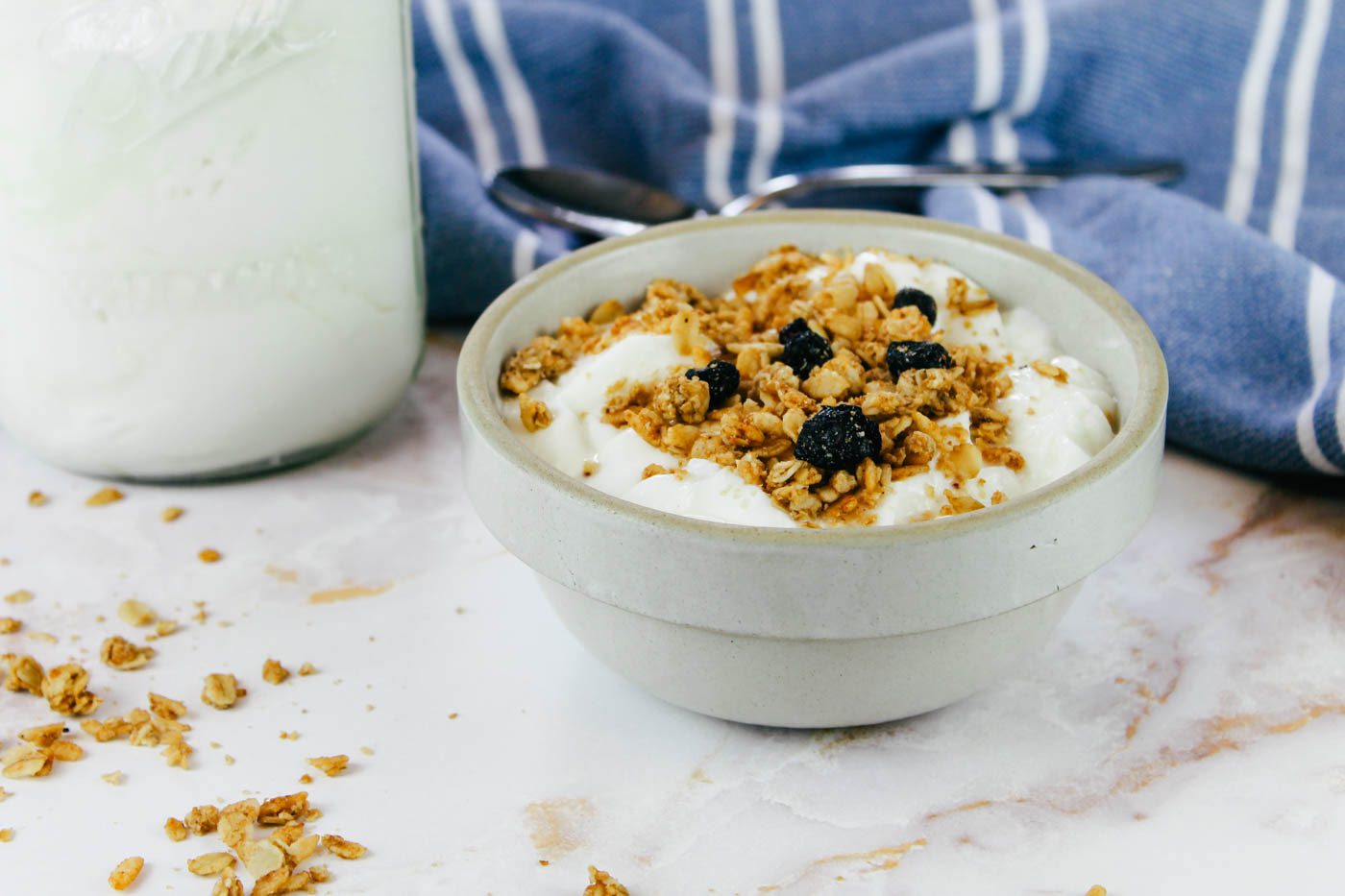
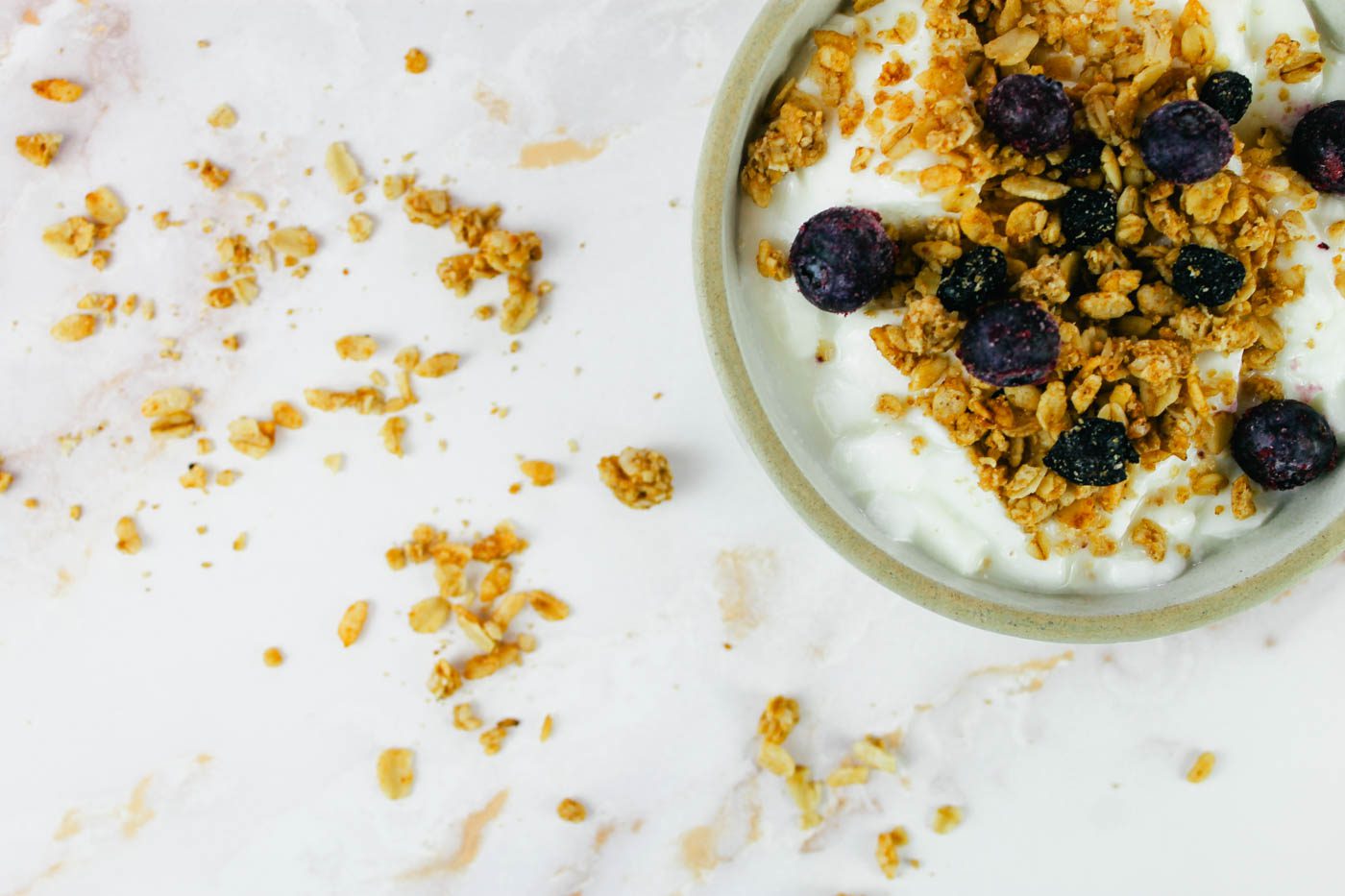
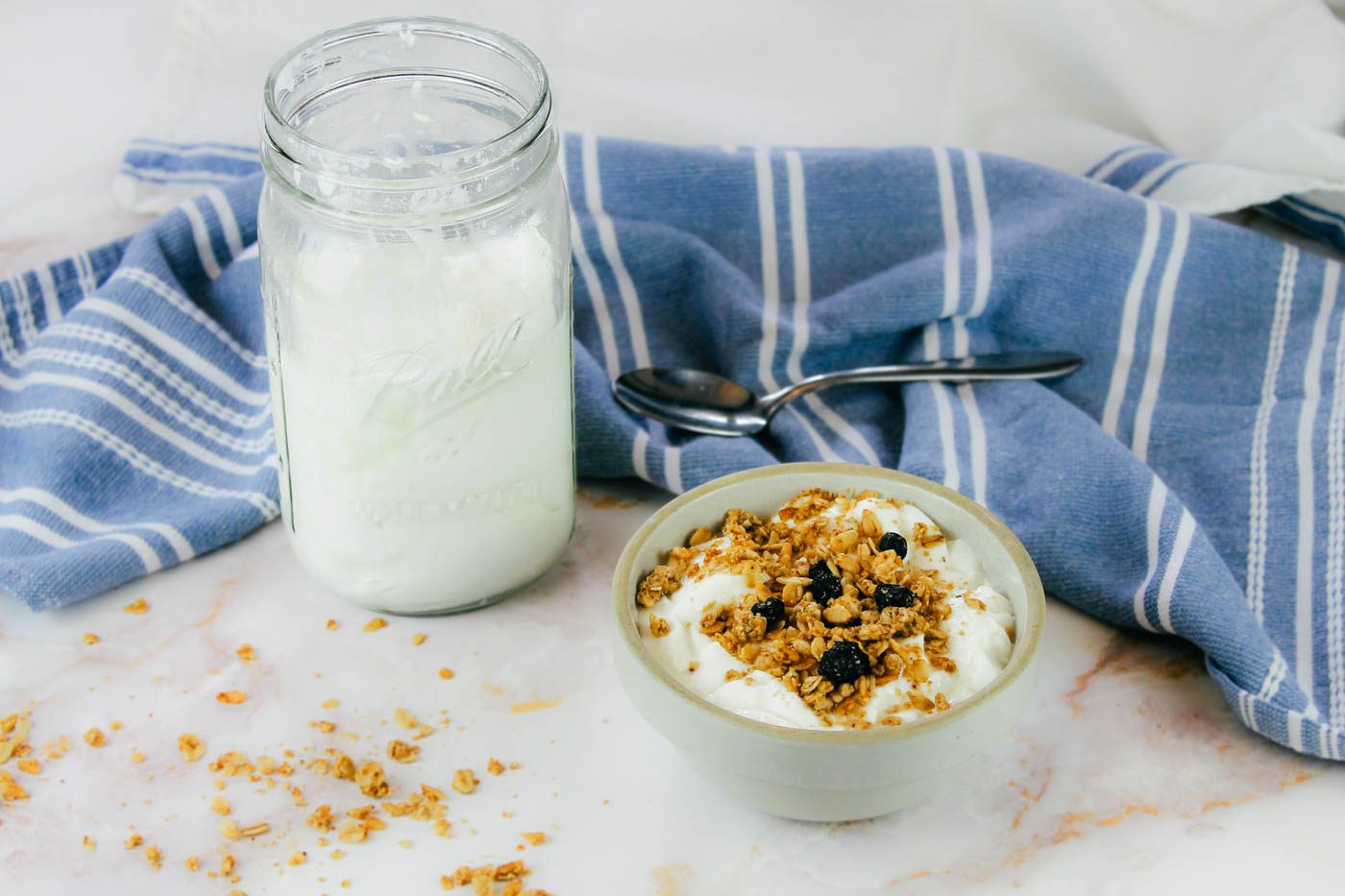
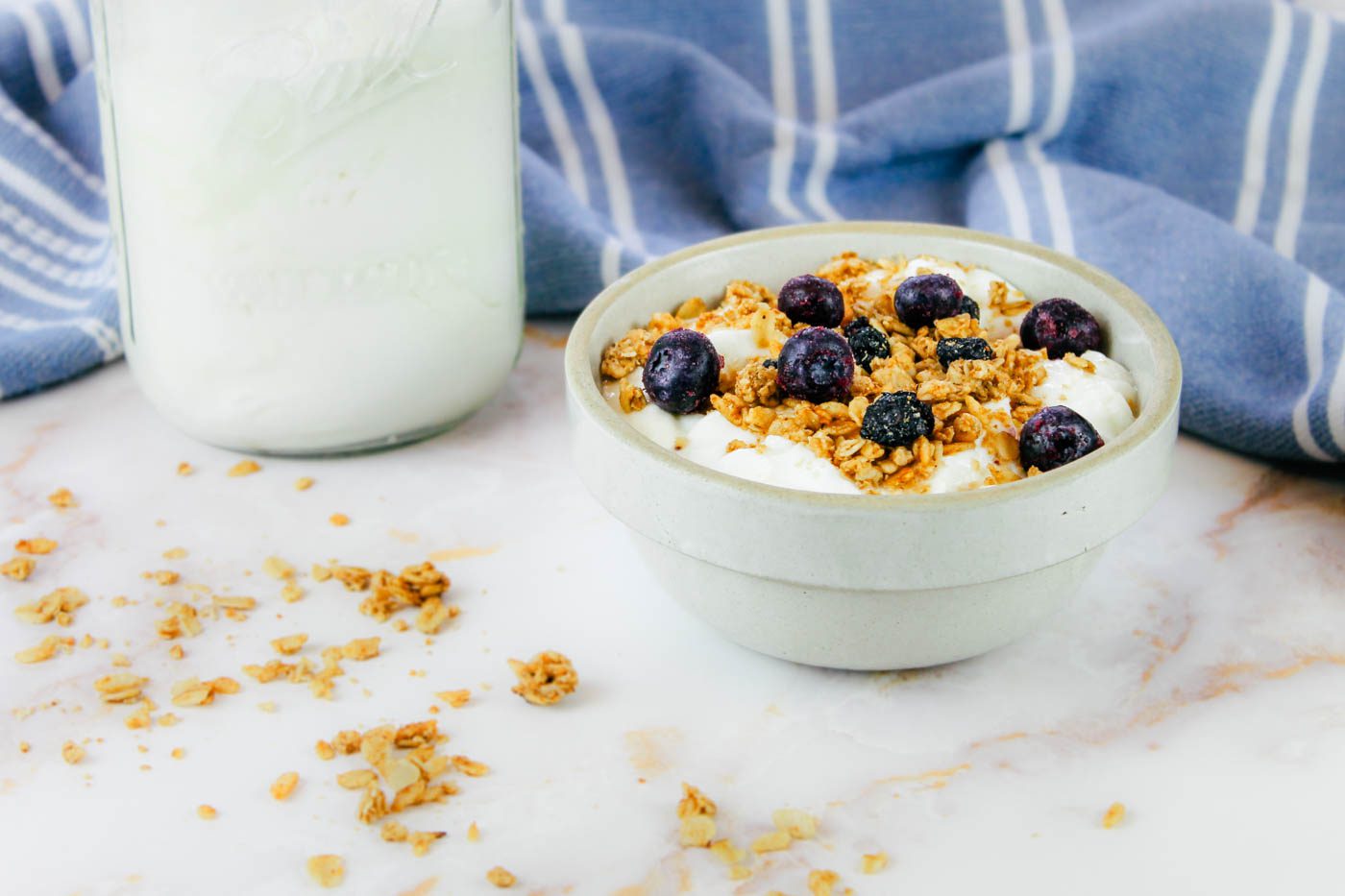
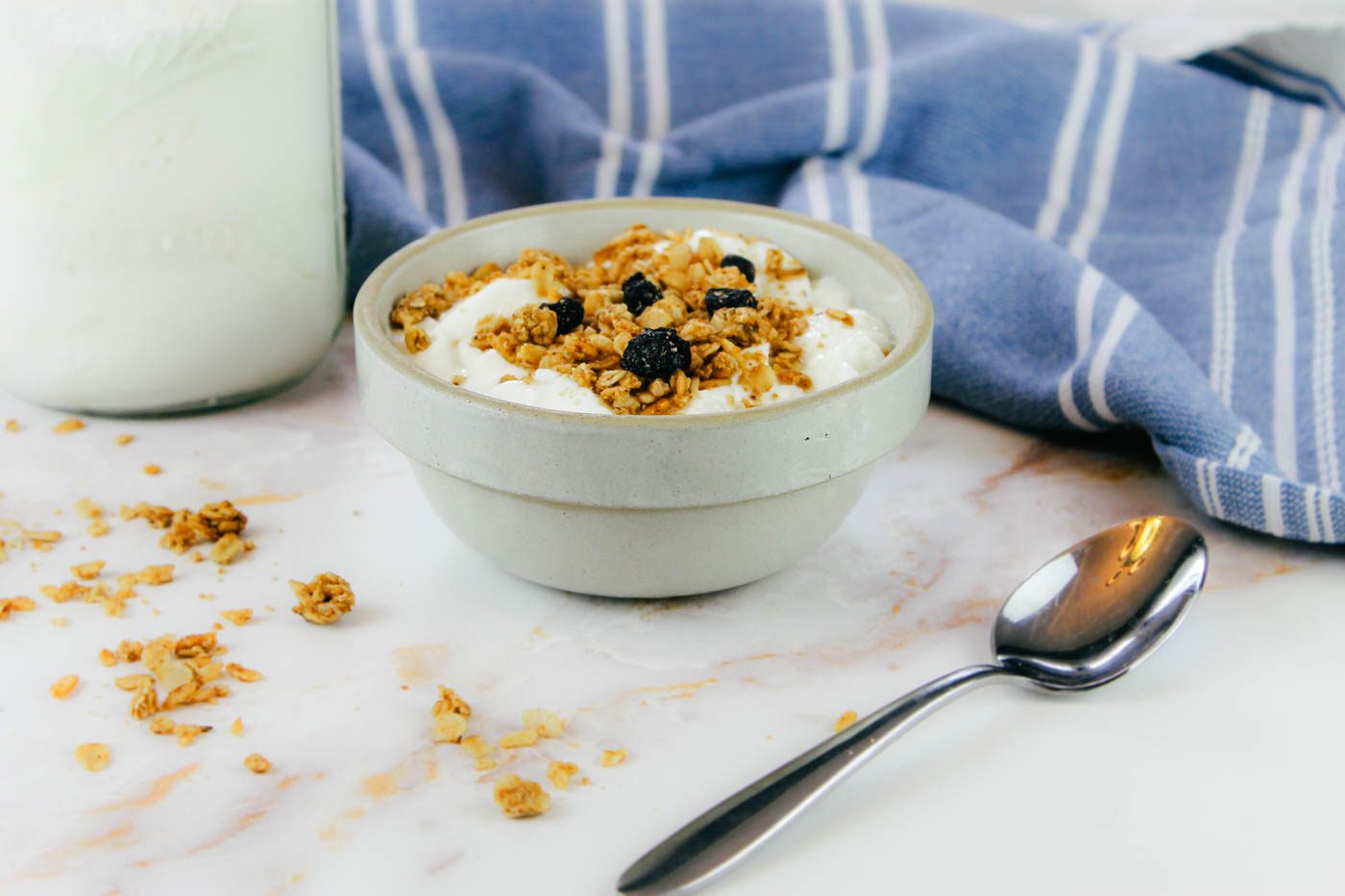
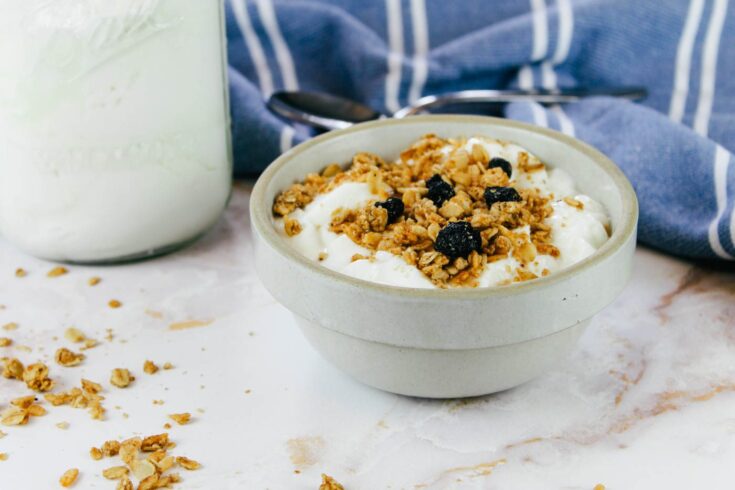
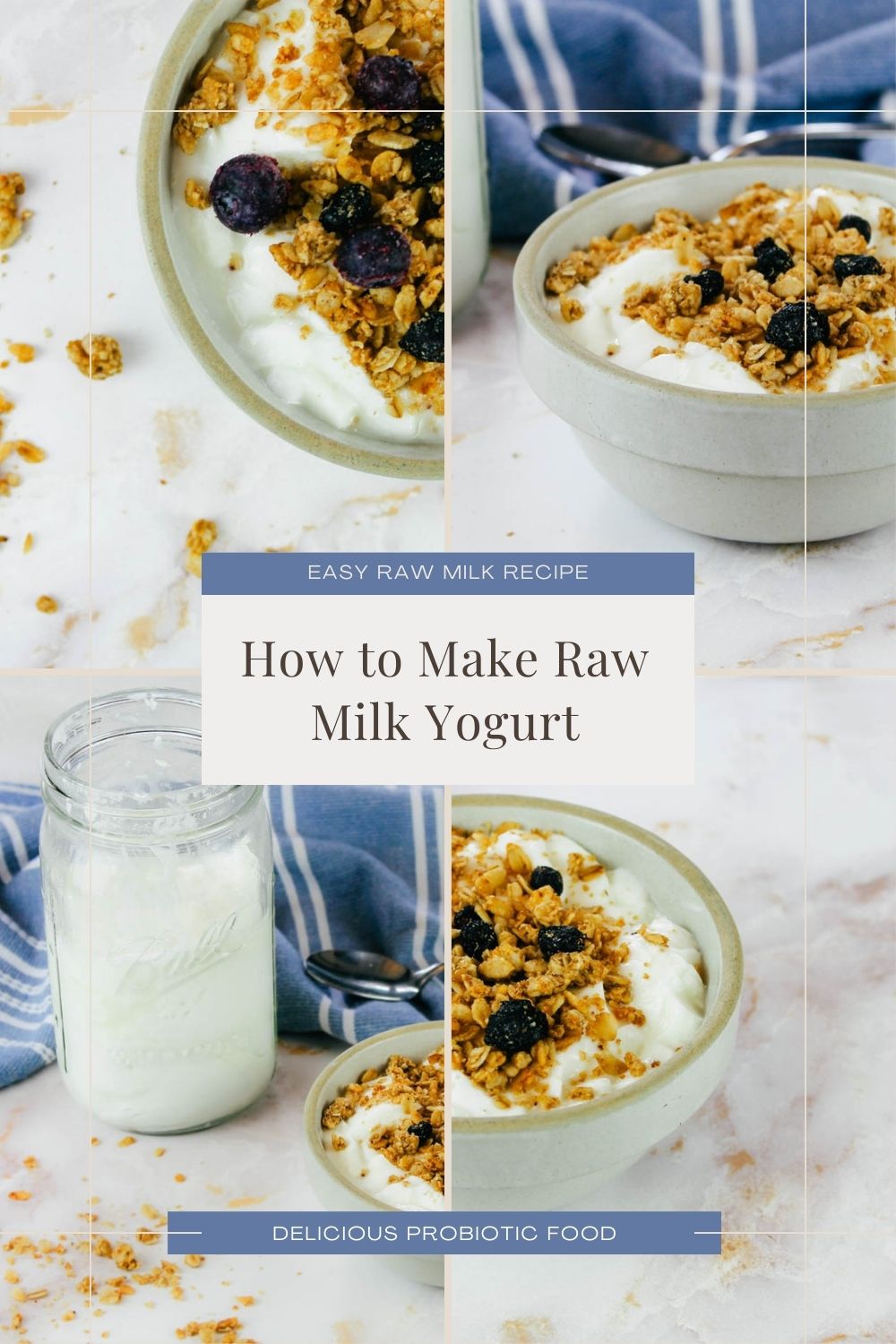





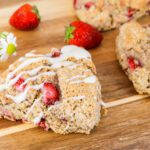
Hi Alisha, I recently learned how to make Quark with our raw milk. It does need to be heated to 88 degrees F. I started with using cultured buttermilk (from the clearance cooler ). It is such an awesome product! Depending on how much whey you drain off, it can used to replace sour cream and cream cheese or if you don’t drain it you essentially have buttermilk. I have made it successfully with pasteurized store milk as well for those who don’t have access to raw milk. I AM curious though as to how it compares nutritionally to yogurt, Consistency wise it would be a creamy dreamy fluffy yogurt substitute…Just wanted to share and curious to your thoughts on this. Blessings!
I’ve never made quark before but we have purchased it from a small local dairy. It was delicious! And so many endless flavor options to turn the quark into. I think we had tried a sweet cinnamon version and a savory kind too. Awesome that you were able to make some yourself using raw milk! I will have to try my hand at making some one day.